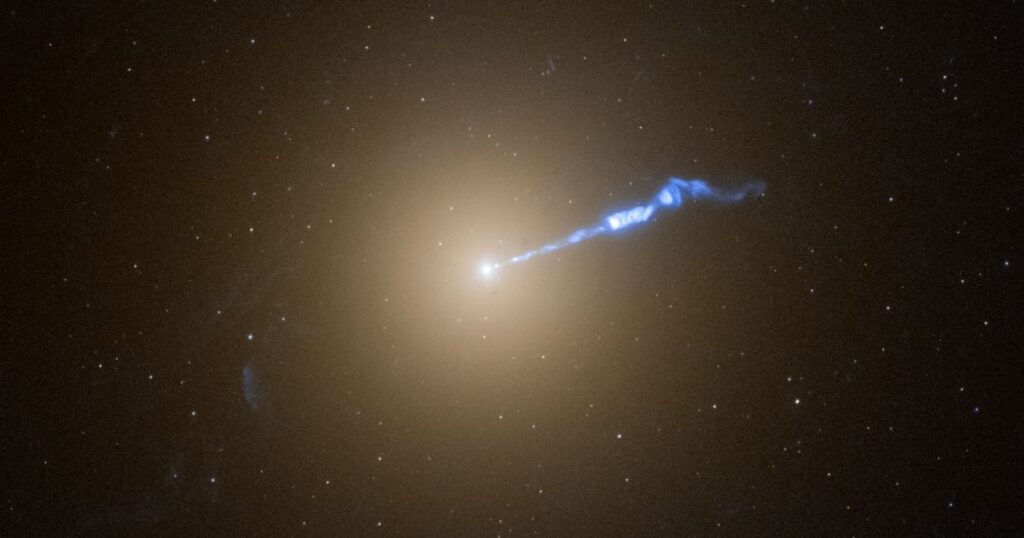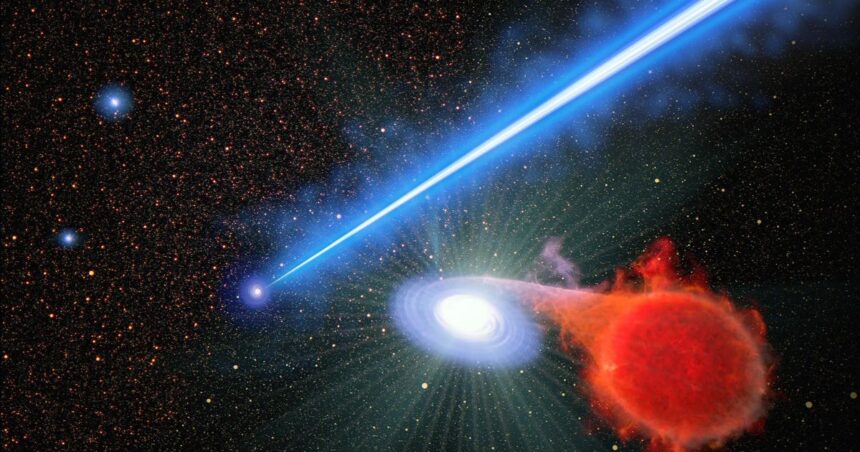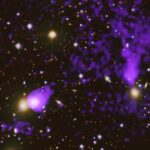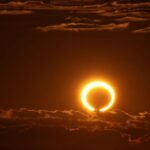Astronomers used NASA’s Hubble Space Telescope and made a groundbreaking discovery. They found that jets from a supermassive black hole can ignite nova explosions in nearby star systems. This discovery baffles and excites scientists.
A supermassive black hole is a giant black hole found at the center of every galaxy. It is very massive, and if we compare it with our sun, that black hole is millions to billions of times more massive than our sun. When they consume large amounts of matter, they can shoot out jets of plasma at nearly the speed of light. These jets are incredibly powerful and can stretch for thousands of light-years.
NASA’s Hubble Space Telescope has been orbiting Earth since the 1990s; it captured many images of these jets. The telescope observed that in the vicinity of these jets, nova explosions were happening more frequently.
Nova Explosion
The Nova star explosion actually took place in the Binary star system, in which one star is a red giant, and the other is a white dwarf star. White dwarf star pulls the material of the red giant till the red giant’s nuclear fuel exhausts. After that, an explosion occurs on the surface of the white dwarf star known as a “Nova explosion”.
In a binary system, the normal star can transfer material, mainly hydrogen, to the white dwarf. When enough hydrogen accumulates on the surface of the white dwarf, it can trigger a thermonuclear explosion.
This explosion is what we call a nova. Novas are relatively common in the universe, but what Hubble found was that they were happening almost twice as often near the jets of the supermassive black hole in the galaxy Messier 87.
Messier 87 Galaxy
Messier 87, also known as M87, is a giant elliptical galaxy located about 54 million light-years from Earth. At its center lies a supermassive black hole with a mass of about 6.5 billion times that of the Sun. This black hole is famous for its massive jets, which extend for about 3,000 light-years. These jets are composed of plasma and travel at nearly the speed of light.

Reason Behind this Trigger
Scientists have proposed many theories about how a nova explosion could occur due to plasma jets of black holes. Initially scientists thought that plasma jets might be enhancing the fueling process of the white dwarfs, making them explode more frequently.
However, they found that it was not possible. Another theory was that the jets might be creating new binary star systems. However, when astronomers analyzed the data, they found that neither of these theories fully explained the increased rate of nova explosions.
This mystery baffled scientists. Alec Lessing, a lead author of the Stanford University study, said, “We don’t know how it happened, but its discovery is going to excite us a lot.” This means that we have not yet learned about supermassive black holes and their jets that interact with their surroundings.
The Hubble Space Telescope has been instrumental in making this discovery. It has provided clear and detailed images of the jets and the surrounding star systems, allowing scientists to study the interactions between the jets and the stars in great detail.
The discovery has important implications for our understanding of the universe. It shows that supermassive black holes can have a significant impact on their surroundings. The jets from these black holes can influence the behavior of nearby stars and star systems. This finding also raises new questions about the nature of black hole jets and their interactions with matter.
Scientists are now planning the next step: further observations to better understand this phenomenon. They hope to use the James Webb Space Telescope for this purpose. These observations could provide new insights into the behavior of supermassive black holes and their jets.
Editor’s Recommendations
- Extraterrestrial Life: SETI Scientist Says ‘We Are Close’ to Finding Aliens
- SpaceX Crew-9 Launches to Retrieve Sunita Williams from ISS
- Annular Solar Eclipse on Oct. 2, Witness the Sky’s Fiery Ring at Breakneck Speed
- Once-in-a-Lifetime Event: Corona Borealis Constellation Shine Brighter as Nova Explosion




